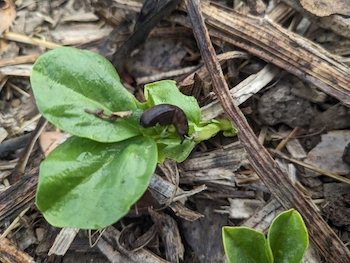Leading Australian slug expert Dr Michael Nash is urging growers in areas affected by slugs to closely monitor paddocks this spring to assess the potential risk for their 2023-24 crops.
Favourable conditions over the past three years have led to a build-up of slug numbers, with populations carrying over into following seasons.
Dr Nash, who is an invertebrate ecologist, says soil moisture availability is the key regulator of slug populations and pest populations have continued to expand into areas that have not traditionally been affected. These include areas with an average rainfall of less than 500 millimetres a year, such as northern Victoria and southern New South Wales.
He notes that growers in lower-rainfall areas have become very adept at preserving soil moisture with practices such as stubble retention, and with the run of wet years, slugs are also taking advantage of the additional soil moisture.
“In spring 2022, black keeled slugs were observed breeding as late as November, which is not something seen before. It highlights their adaptive strategies in reproducing and increasing numbers when conditions are extremely favourable,” Dr Nash says.
Large slug populations have carried over into 2023, with crop damage causing some growers to resow canola crops.
Canola is the most-susceptible crop to slug feeding, as any damage to the growing points at establishment is fatal. Slugs can also cause damage to other grain crops, notably pasture and legume species.
Slugs begin to emerge from the soil once it is above 20 to 25 per cent soil moisture, but only a proportion of the population is active on the soil surface at any one time, which requires an ongoing baiting strategy with up to three applications.
Dr Nash says that growers experience yield losses once plant numbers drop below 15 to 20 per square metre in canola crops. These losses have been estimated at up to $1000 per hectare in high-yielding farm systems. The cost of multiple applications of baits remains a cost-effective option to prevent this level of loss, he says.

Faba beans and other legume crops are susceptible to slug damage. Photo Michael Nash
But there has been a shortage of some bait supplies, particularly for those ordering late, with reports that baits are being consumed more rapidly than expected due to large numbers of slugs being active.
For growers in Tasmania, south-western Victoria, south-eastern South Australia and southern Western Australia, slugs are a familiar pest. But growers in other areas who are less experienced with the threat might have been unprepared for this year’s outbreak and are the most likely to have been affected by bait shortages.
However, Dr Nash points out that baits are only part of the solution. Other farm practices including stubble retention and the loss of natural predators contribute to favourable conditions for the pest.
To help growers manage the impact of slugs, GRDC has updated its Slug control fact sheet to help identify, monitor and control pest numbers to reduce crop losses.
The black keeled slug and grey field slug are known as the most damaging, with the brown field slug less so, and more commonly found in pastures. The striped field slug is a non-pest species. GRDC’s Slugs in Crops – The Back Pocket Guide can help growers identify which species are affecting their crops.
Dr Nash will also lead GRDC-supported workshops in August and September to help growers understand how to better predict slug issues and implement integrated management strategies on-farm.

























































